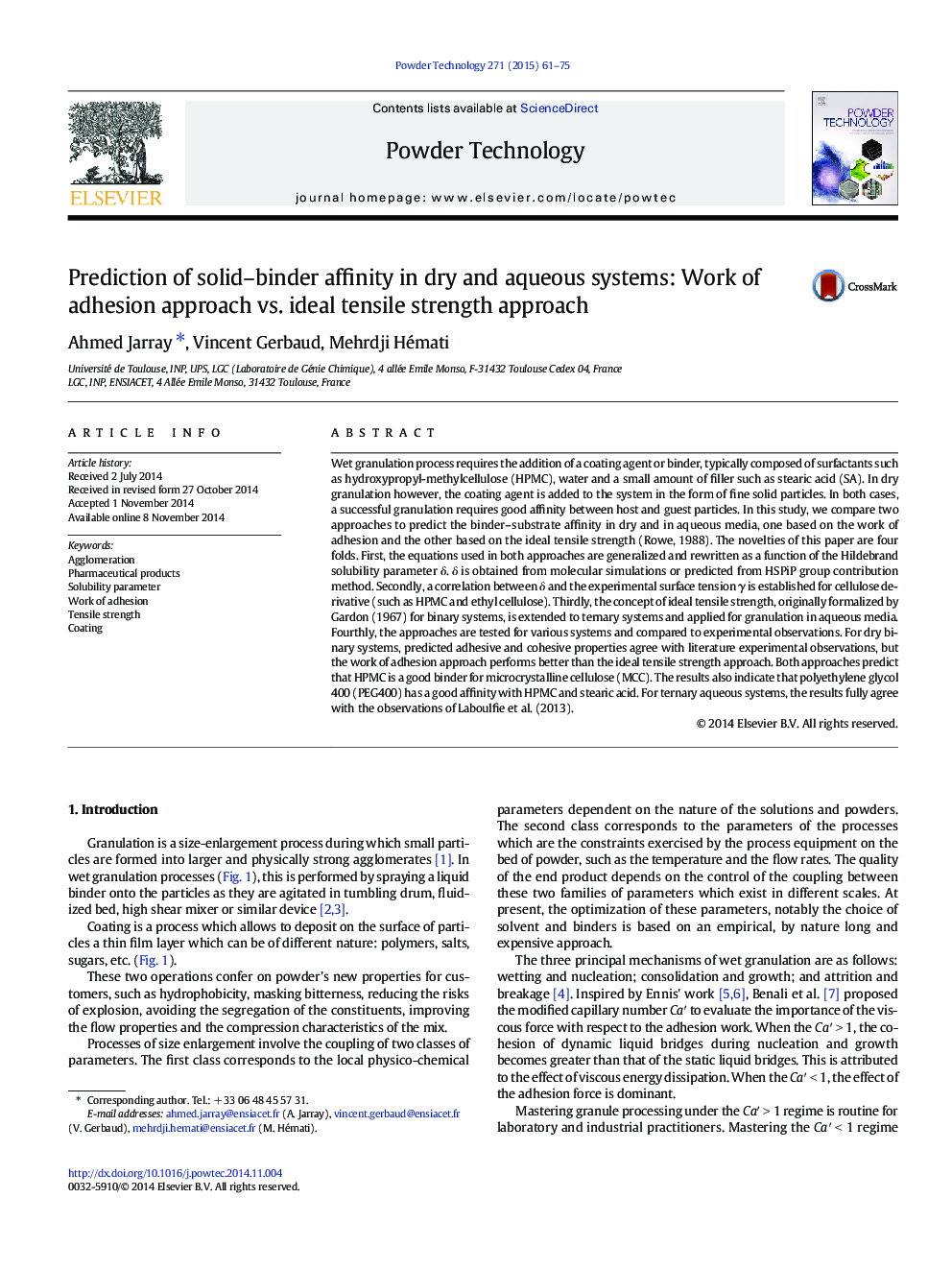| کد مقاله | کد نشریه | سال انتشار | مقاله انگلیسی | نسخه تمام متن |
|---|---|---|---|---|
| 235790 | 465648 | 2015 | 15 صفحه PDF | دانلود رایگان |
• We generalize the work of adhesion and the ideal tensile strength equations.
• We extend the ideal tensile strength to ternary systems.
• We predict binder–substrate affinity in binary and aqueous systems.
• Stearic acid is stabilized in water by HPMC.
• PEG400 has a good affinity with HPMC and stearic acid.
Wet granulation process requires the addition of a coating agent or binder, typically composed of surfactants such as hydroxypropyl-methylcellulose (HPMC), water and a small amount of filler such as stearic acid (SA). In dry granulation however, the coating agent is added to the system in the form of fine solid particles. In both cases, a successful granulation requires good affinity between host and guest particles. In this study, we compare two approaches to predict the binder–substrate affinity in dry and in aqueous media, one based on the work of adhesion and the other based on the ideal tensile strength (Rowe, 1988). The novelties of this paper are four folds. First, the equations used in both approaches are generalized and rewritten as a function of the Hildebrand solubility parameter δ. δ is obtained from molecular simulations or predicted from HSPiP group contribution method. Secondly, a correlation between δ and the experimental surface tension γ is established for cellulose derivative (such as HPMC and ethyl cellulose). Thirdly, the concept of ideal tensile strength, originally formalized by Gardon (1967) for binary systems, is extended to ternary systems and applied for granulation in aqueous media. Fourthly, the approaches are tested for various systems and compared to experimental observations. For dry binary systems, predicted adhesive and cohesive properties agree with literature experimental observations, but the work of adhesion approach performs better than the ideal tensile strength approach. Both approaches predict that HPMC is a good binder for microcrystalline cellulose (MCC). The results also indicate that polyethylene glycol 400 (PEG400) has a good affinity with HPMC and stearic acid. For ternary aqueous systems, the results fully agree with the observations of Laboulfie et al. (2013).
Schematic representation of the coating solution from macroscopic to molecular level. Affinity between the primary particles and the coating solution or binder, and between the components of the coating solution can be related to their molecular properties.Figure optionsDownload as PowerPoint slide
Journal: Powder Technology - Volume 271, February 2015, Pages 61–75
